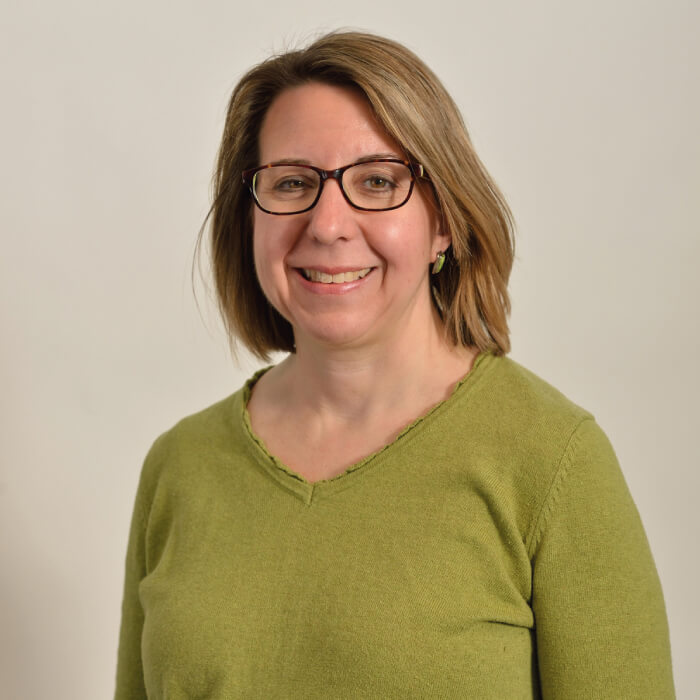Landmark Paper: DY Chen and NJ Dovichi, “Singlemolecule detection in capillary electrophoresis: Molecular shot noise as a fundamental limit to chemical analysis”, Anal Chem, 68, 690-696 (1996).
Analytical chemists spent most of the 20th century developing and improving instrumentation to perform ultrasensitive chemical analysis. The community ultimately achieved single molecule detection in the 1980s with laser-induced fluorescence. Those early studies were simply interested in addressing the formidable issues associated with minimizing noise, maximizing signal, and processing data to confidently detect and count molecules. This paper with David Chen was the first to discuss fundamental ramifications of measurements with small numbers of molecules.
Optical shot noise – observed as a Poisson distribution in detected photons in photon counting experiments – is a fundamental noise source that ultimately limits the precision of spectroscopic measurements. In this paper, we demonstrated the analogous phenomenon of molecular shot-noise, where performing analysis on small numbers of analyte molecules introduces a fundamental noise source. As expected, molecular shot noise limits the precision of quantitative measurements, particularly when dealing with small numbers of molecules. It was more surprising to discover that molecular shot noise also limited the precision with which we can measure migration time and peak width in separations.
What makes it stand out? This paper was the first systematic study of fundamental issues associated with quantitative analysis on small numbers of molecules. As analytical chemists, we have been trained to consider the accuracy and precision of measurements. Single molecule counting is the ultimate quantitative measurement; after all, one can have no higher accuracy than counting the number of molecules in a sample. However, the precision of that measurement is ultimately limited by Poisson statistics: fluctuations in the number of molecules taken for chemical analysis is a fundamental and irreducible source of uncertainty.
Our experience with ultrasensitive analysis based on fluorescence detection with capillary electrophoresis informed our work on separation of DNA fragments generated by Sanger sequencing, which resulted in our development of capillary array electrophoresis for highthroughput DNA analysis, which led to the sequencing of the human genome ahead of schedule and under budget.

Landmark Paper: RW Hutchinson et al, “Imaging and spatial distribution of β-amyloid peptide and metal ions in Alzheimer’s plaques by laser ablation–inductively coupled plasma– mass spectrometry”, Anal Biochem, 346, 225–233 (2005).
The fact that my choice of landmark paper was published before I even started my PhD perhaps shows how striking it was. What Hutchinson and colleagues showed was possible in 2005 has grown with the advances of many others, of course – Giesen et al (1) being my second choice for purely jaw-dropping reasons – into a high-tech and exciting field of cancer diagnostics and personalized medicine. It also showed what is possible in neurodegenerative disease research but has yet to be capitalized on: using laser ablation-inductively coupled plasma-mass spectrometry (LA-ICPMS) with an outside-the-box approach that could tell us things a microscope and fluorophore can’t. Its impact is still evident; it raises new questions every time I look at it, and I’m sure I’m not alone.
In my mind, the paper was ahead of its time and was limited only by the technology available to the team. They showed you could tag one of the most elusive proteins in all neurodegenerative disease research in beta-amyloid with lanthanides (the 1E8 variant, to be precise, used by nearly every Alzheimer’s researcher in the world today). They showed you could pull out proteins with laser capture microdissection to be sure you were labeling the right thing. They showed a whole range of possibilities that hundreds of labs could be working on right now – and I know the number is growing.
Full disclosure: I’ve known the lead author, Rob Hutchinson, for years. We’ve worked together, and a previous owner of NewWave Research (now part of Elemental Scientific) once contributed to an Australian Research Council Linkage grant scheme, and Australian Government initiative to support collaboration between industry and academia. We’ve become good friends, and I texted him for a react quote. After initially blowing me off with voicetotext because he was driving, he said: “I really hoped it was something totally different that would grab people’s attention when I conceived the project.” Well, Rob, it’s been capturing quite a few, and will hopefully capture even more.

Landmark Paper: CA Bizzi et al, “Maxwell-Wagner effect applied to microwave-induced selfignition: a novel approach for carbonbased materials”, Anal Chem, 90, 43634369 (2018).
Despite several advances in the atomic spectrometry field, the most conventional way to introduce the sample into the equipment for metals and non-metals determination in routine analysis is as a suitable solution. Although this is widely known, it is not an easy task because most atomic spectrometric techniques are susceptible to various spectral and nonspectral interferences – if the sample is not efficiently prepared. Thus, the sample preparation step represents a central role in the analytical sequence. The conversion of any sample into a solution both containing the analytes and free of interferences is always a big challenge.
The generation of waste and the risks to the analyst are also important factors that must be considered during this stage. Many research groups have sought new suitable alternatives to ensure the quality control of the most varied matrices, including food, environmental samples and pharmaceuticals. It is therefore necessary to highlight how scientists have been solving these problems to ensure the accuracy of the results. The scientists in my “Landmark Literature” paper recently method to digest graphite and coal samples, based on very well established concepts from chemistry and physics.
"This work is extremely innovative and uses well-established basic concepts to develop a new alternative for difficult to digest materials."
These samples are considered hard-todigest materials and analyzing them is always a challenge for routine analysis, even for the determination of major elements. Concentrated acids associated with closed systems are not always efficient when fully oxidizing the organic material or in allowing a free carbon interference solution. To achieve a better digestion efficiency, special ultra high-pressure microwave systems or combustion-based methods are generally required. In line with that, the authors demonstrate the use of the Maxwell-Wagner effect – the principle that the fast heating of carbonaceous materials under a microwave field, in an oxygen pressurized atmosphere, induces sample self-ignition. The feasibility of this approach is demonstrated as an efficient sample preparation method for the digestion of graphite and coal for further elemental determination. The formation of localized microplasmas caused by the interaction between carbonaceous materials and the electromagnetic field in the microwave frequency could be explained by the Maxwell-Wagner effect. To apply this concept to the sample preparation field, the authors developed a special holder, which was introduced with the sample into a conventional vessel used for microwave-assisted digestion or microwaveinduced combustion in multimode microwave cavity.
Combining a closed reactor pressurized with oxygen to promote sample self-ignition and oxidation of the whole organic matter, it was possible to eliminate the carbon interferences during the determination step. The temperature achieved during the sample combustion in a few seconds was higher than 1000 °C. A high sample mass (up to 600 mg of coal and graphite) was efficiently digested and only a diluted solution of HNO3 (4 mol L−1) was used for analyte absorption. Using this approach, it was possible to determine several elements (such as Ba, Ca, Fe, K, Li, Mg, Na, and Zn) by inductively coupled plasma optical emission spectrometry (ICP-OES) with good accuracy. One of the most important advantages of the proposed procedure is related to the quick and easy way graphite and coal were digested, as both samples are considered resistant to chemical attack, being hard to bring into solution for further elemental determination. In addition, the use of diluted solutions is an important aspect as it helps to minimize laboratory residues generation, which is in agreement with green chemical recommendations, and allows a better compatibility between the final solution and the ICP-OES technique.
This work is extremely innovative and uses well-established basic concepts to develop a new alternative for difficult to digest materials. The analytical chemistry community is broad and should be aware of the importance of the sample preparation step and its relation to the correct expression of the results. Obtaining a solution from a solid sample may sometimes not be enough for the analysis – even if the solution is clear – so a careful evaluation of the figures of merit of the proposed method should always be carried out. Many analytical methods may be wrong because basic concepts are not applied during the sample preparation stage – and even the most powerful analytical tool will not guarantee accurate results without appropriate sample prep.
If an analyst doesn’t have the most appropriate analytical method for a specific purpose, she or he may well be able to revisit well-established concepts, as these authors have. It demonstrates that a well-understood basic concept can be the basis for new, important inventions.method to digest graphite and coal samples, based on very well established concepts from chemistry and physics. These samples are considered hard-todigest materials and analyzing them is always a challenge for routine analysis, even for the determination of major elements. Concentrated acids associated with closed systems are not always efficient when fully oxidizing the organic material or in allowing a free carbon interference solution. To achieve a better digestion efficiency, special ultra high-pressure microwave systems or combustion-based methods are generally required. In line with that, the authors demonstrate the use of the Maxwell-Wagner effect – the principle that the fast heating of carbonaceous materials under a microwave field, in an oxygen pressurized atmosphere, induces sample self-ignition. The feasibility of this approach is demonstrated as an efficient sample preparation method for the digestion of graphite and coal for further elemental determination. The formation of localized microplasmas caused by the interaction between carbonaceous materials and the electromagnetic field in the microwave frequency could be explained by the Maxwell-Wagner effect. To apply this concept to the sample preparation field, the authors developed a special holder, which was introduced with the sample into a conventional vessel used for microwave-assisted digestion or microwaveinduced combustion in multimode microwave cavity.

Landmark Paper: F France, “Advanced spectral imaging for noninvasive microanalysis of cultural heritage materials: review of application to documents in the U.S. Library of Congress,” Appl Spectrosc 65, 565–574 (2011).
Early in my academic career at a small liberal arts college, the research projects conducted by students under my direction were extensions of my own graduate and postdoctoral research in environmental analysis. Finding local sampling sites with interesting stories and reasons to conduct chromatographic and metal speciation measurements was easy, and students were drawn to projects with practical research goals. Collaborations with other faculty at our college diversified these research opportunities, and eventually led me to shift to a completely different research focus. I chose the Fenella France paper as a landmark for its inspiration as I moved away from the “comforts” of environmental analysis into the (for me) completely unknown and new topic of archaeometry and cultural heritage analysis.
France uses hyperspectral imaging to spectroscopically characterize objects in the Library of Congress collections. The paper specifically discusses her work on the Waldseemüller World Map, the L’Enfant plan for Washington DC, and the first draft of the US Declaration of Independence. France’s forensics-like investigations to non-destructively learn about the people, processes, and materials used to create these “samples” are riveting. I was not familiar with hyperspectral imaging as a technique when I first read the paper, and appreciated the large amount of data and two-dimensional imaging format generated via the technique. And considering the rather mundane mortars, tiles, and small fresco fragments our research group investigated at that time, reading about analyses of the Declaration of Independence was fascinating!
In 2012, I attended a talk by France on her hyperspectral imaging work at a local regional professional society meeting. I had read her Applied Spectroscopy focal point paper prior to the talk, so encouraged many of my students to attend and learn about her work. The presentation also was attended by college faculty and industry researchers from a vast array of disciplines and specialties. Having the opportunity to meet France and hear about her work in person so early in my journey as a cultural heritage researcher certainly solidified my choice to concentrate my research efforts in the field.
Not only did the France paper positively impact my research, I also routinely use it as supplemental reading in my non-majors and introductory chemistry courses. The paper provides a mechanism to teach about light and spectroscopy via memorable examples of how chemistry can be used to better understand history. The secretive and undocumented alteration of “subject” to “citizen” by Thomas Jefferson is surprising to students, especially when they realize the change would have gone undiscovered if not for France’s research. Class discussions on this and other aspects of the paper keep students engaged, often lead to side discussions on other analytical chemistry techniques used for cultural heritage analysis, and have even inspired students to conduct chemistry research later in their academic career.
Though this paper is likely not considered “game changing” to many, I find it highly impactful and inspirational – as do many of my students. France’s work in chemical imaging is practical, yet sophisticated.





